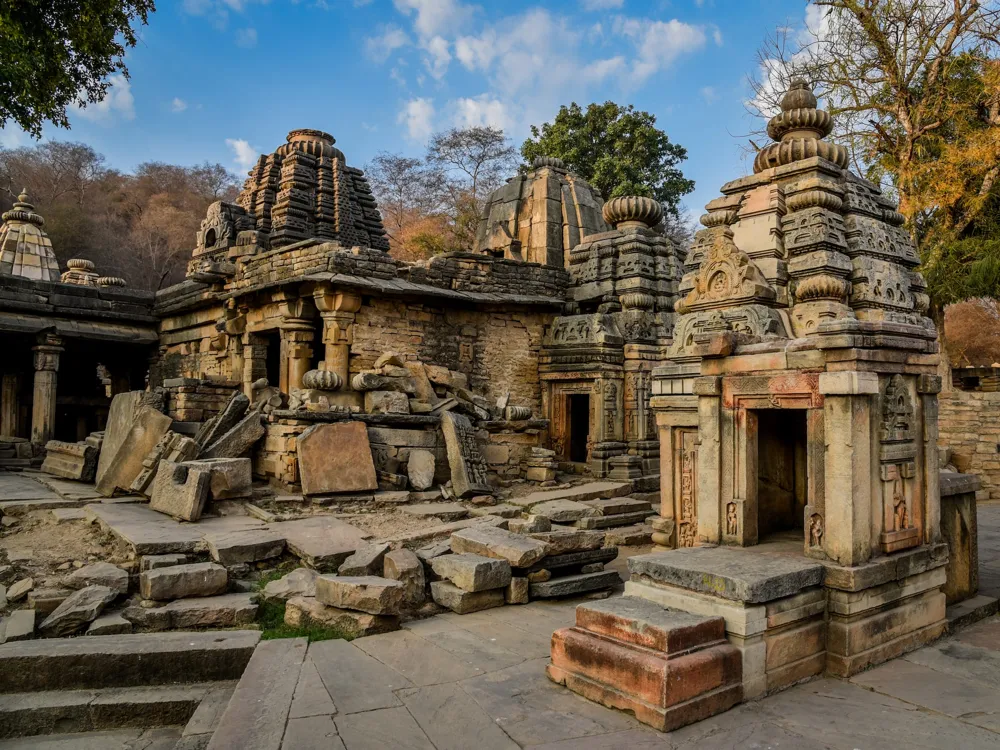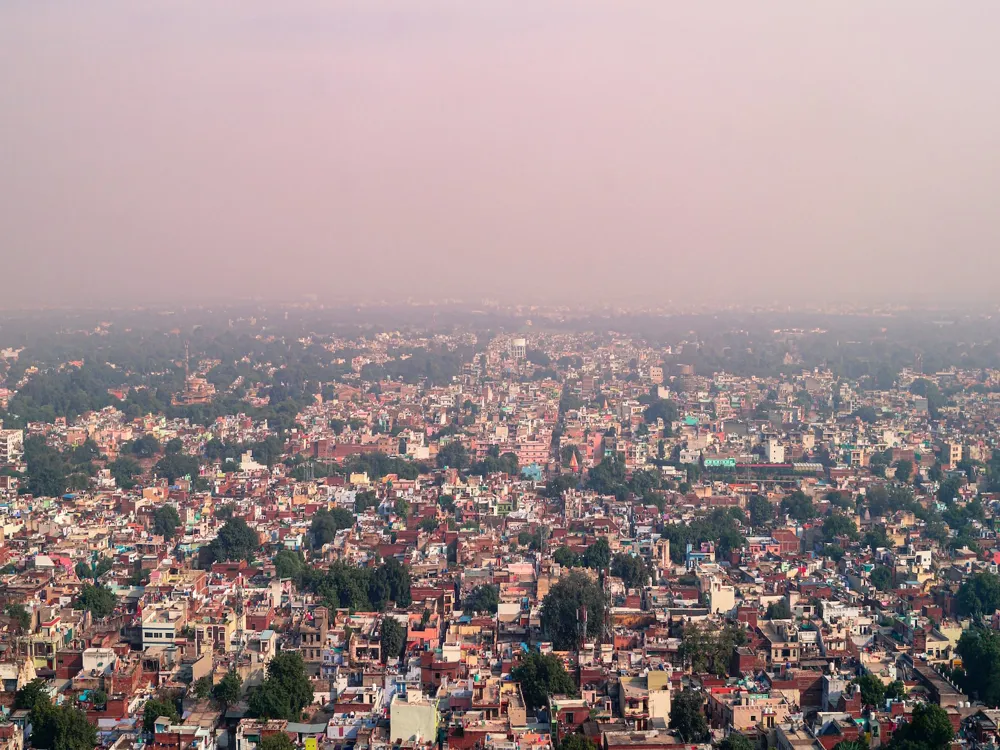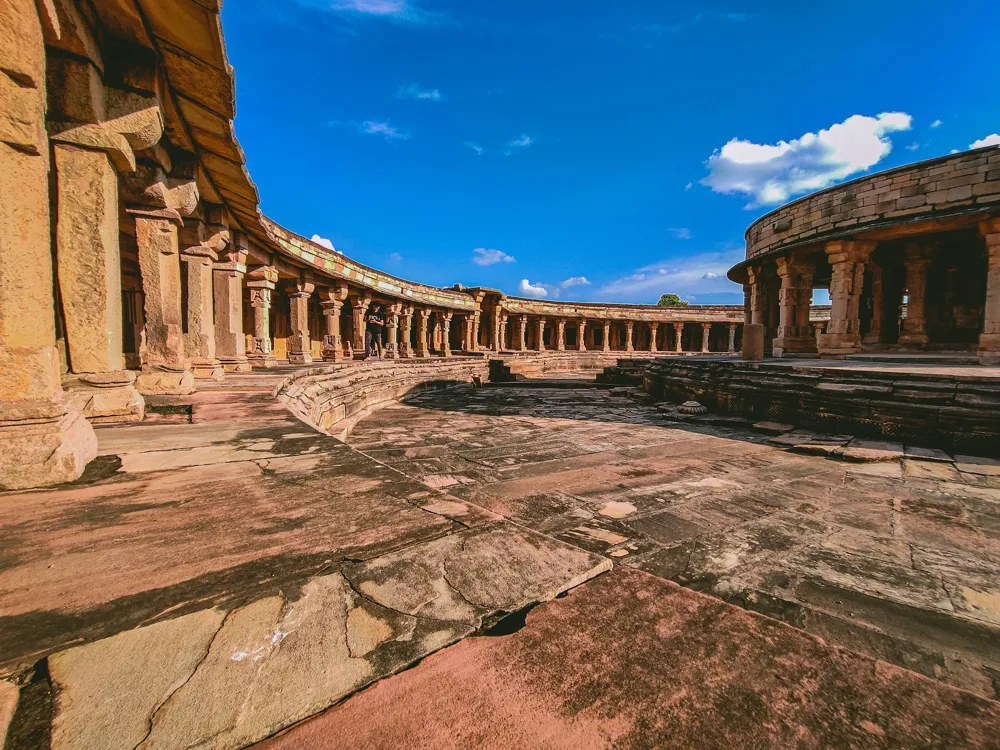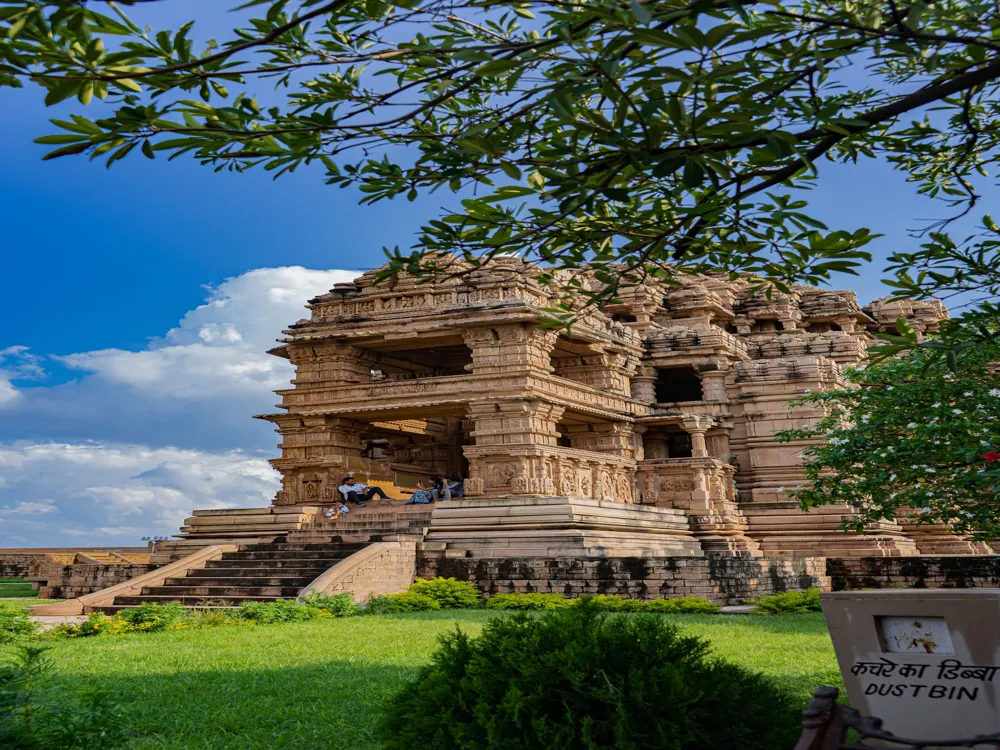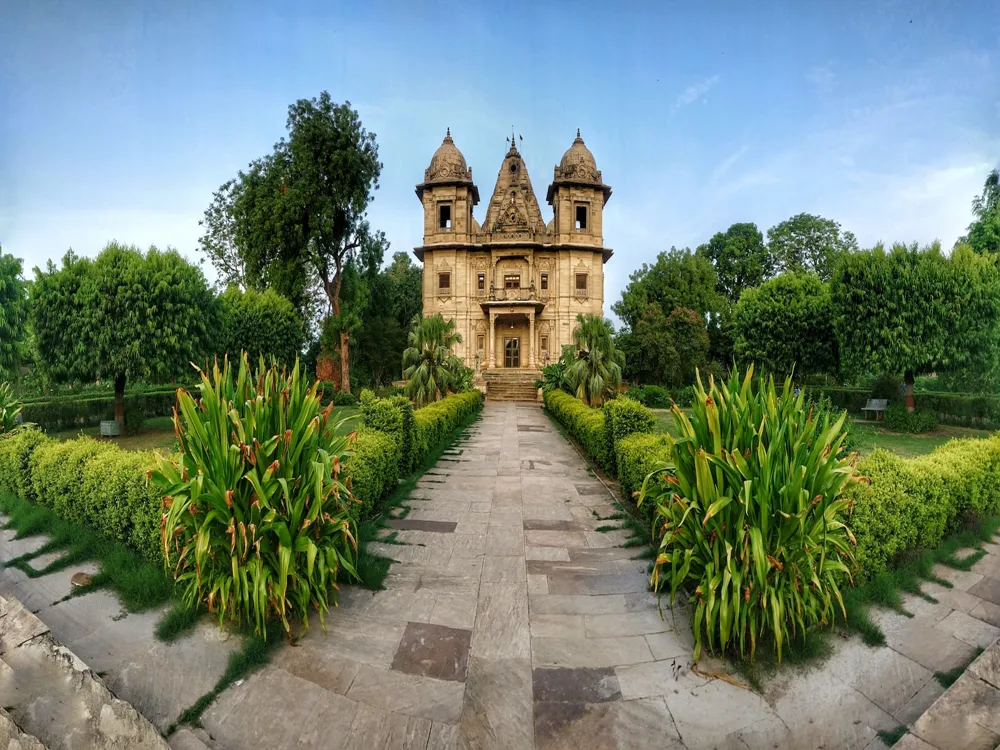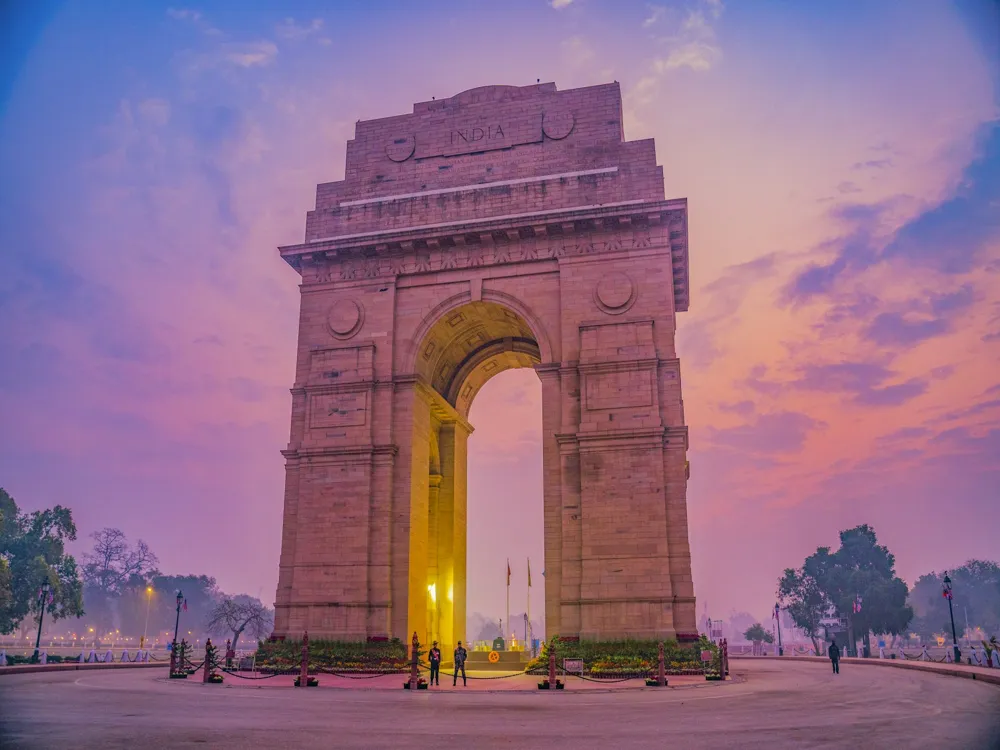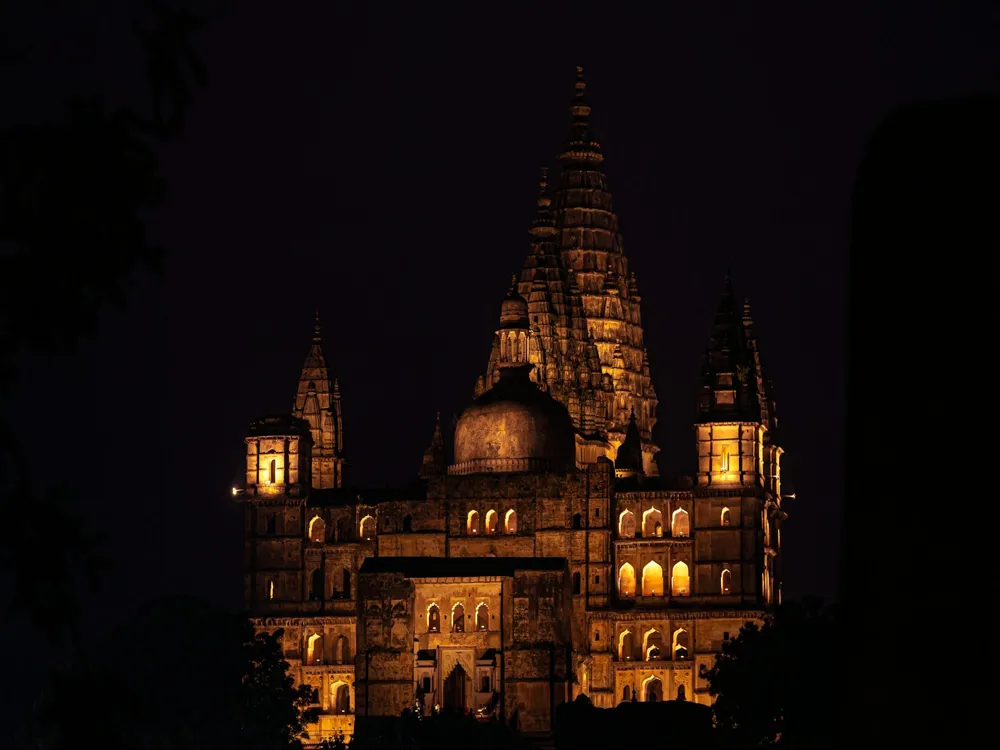Plan Your Travel To Gwalior
Places To Visit In Gwalior
Arihant Emporium
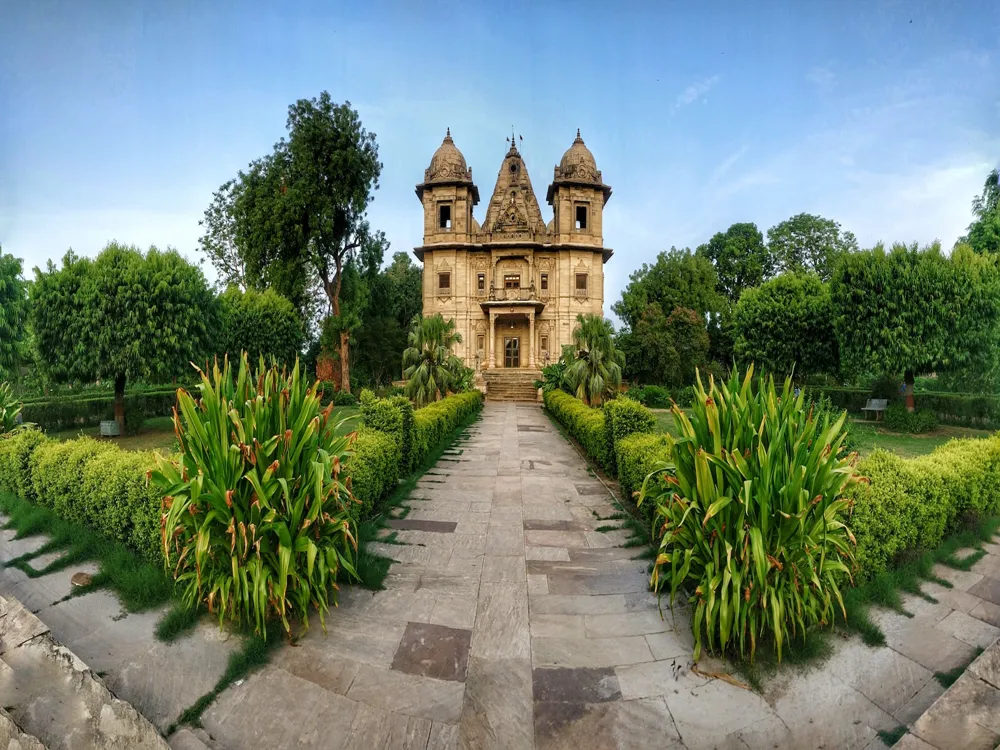
Famous for selling Gwalior style silver boxes decorated with images from the tile work of Man Mandir Palace, this shop is located near Jai Vilas Palace.
Boating at Tighara Dam
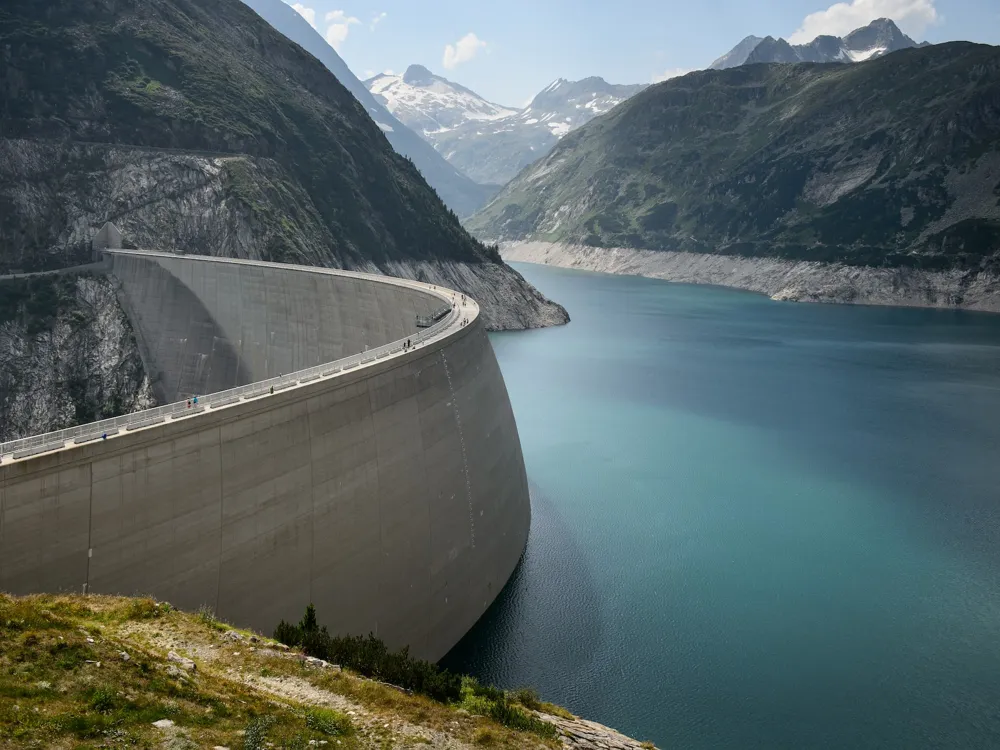
Tighara dam is located just outside the main city and provides a nice getaway from the city.
Chhatris Of Scindia Dynasty

Chhatris of Scindia Dynasty are the memorials built in the memory and honour of the rulers of the Scindia Dynasty. The first one was constructed in the memory of Jayaji Rao Scindia in 1817 CE. The attraction is famous for its architectural beauty. The elegant domes and the beautiful pavilions made of pink and yellow sandstone amidst the lush green lawns is a must-see for tourists.
City Mall
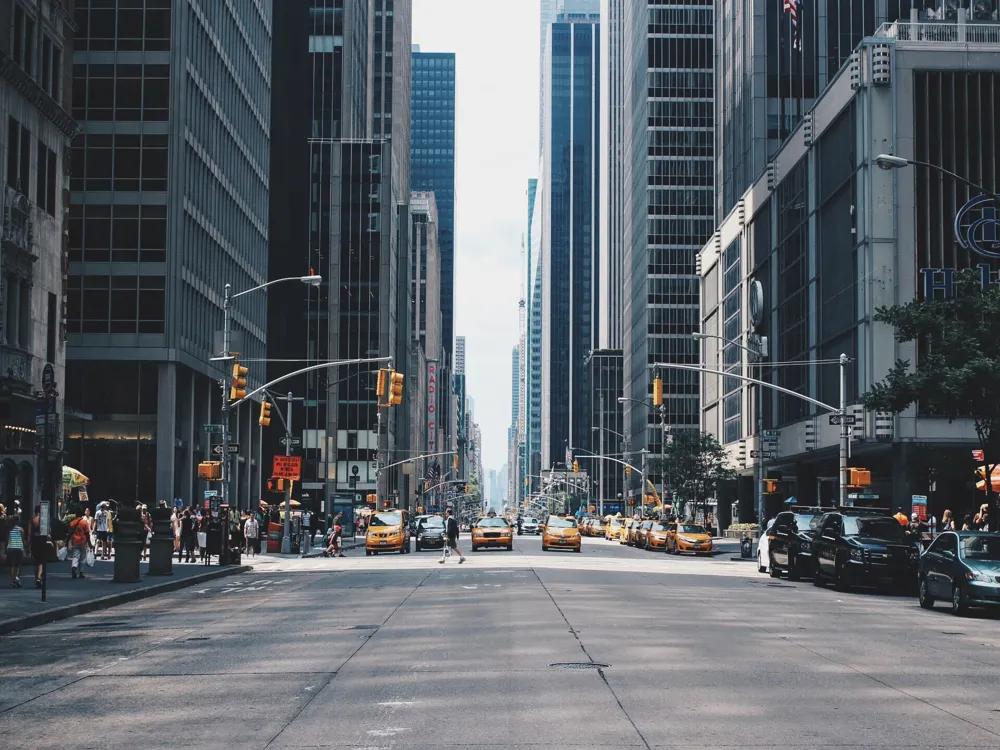
Centrally located on Maharani Laxmi Bai Road, Gwalior, the Dindayal City Mall is for that group of people who absolutely love high-end luxury malls. The mall symbolizes the city's progress, where one can find a plethora of international brands.
The Dindayal City Mall is great mélange of modern architecture along with the latest technology of rainwater harvesting for fountains and a waterfall, thus giving the mall a distinct identity. Now considered as a landmark in the city, this mall is developed by ARG group, Jaipur and promoted by the Dindayal Group. It is a favorite hangout spot, especially among youngsters. Dindayal City Mall has more than 150 outlets consisting of various showrooms, restaurants, bazaars, etc. These stores include brands such Lee Cooper, Spykar, Pizza Hut, McDonald's, etc. to name a few.
Read More
Shopping in Gwalior
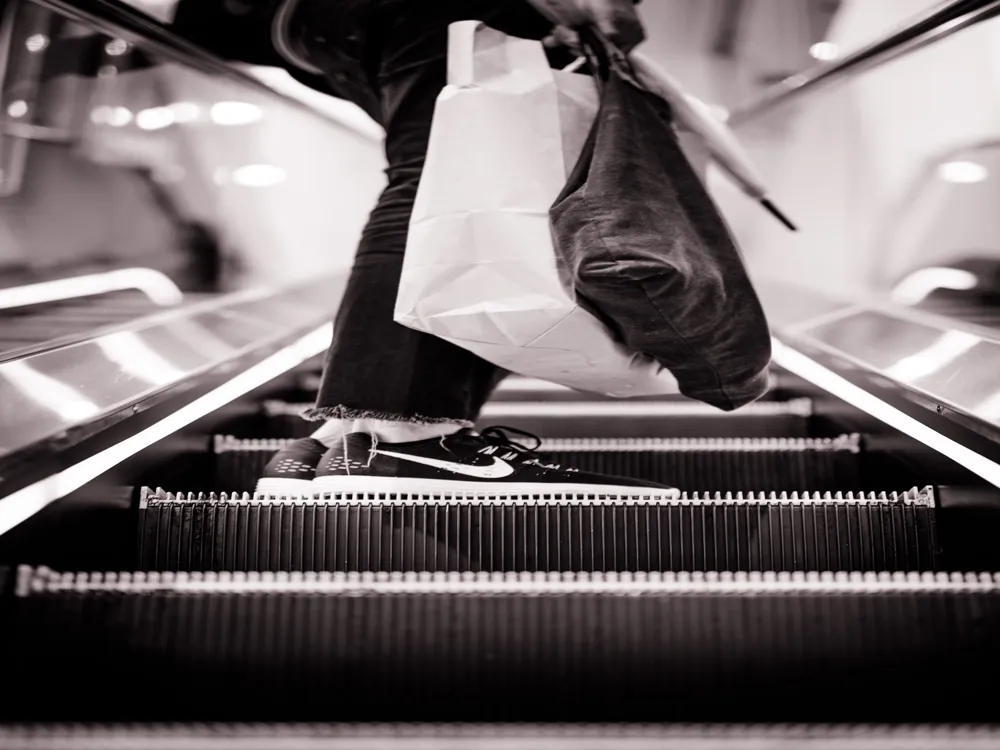
Other than its historical monuments, the city of Gwalior composes of a plethora of rustic market areas and modern malls; which consist of traditional handicrafts and artifacts, handlooms and other attractive items.
Delicate and light cotton along with Maheshwari and Chanderi silk saris symbolize the handloom industry of Gwalior. Kothari shop in Sarafa Bazaar is famous for the sale of these saris. One can buy clothes in wholesale from Naya Bazaar, Dahi Mandi and also in the Gandhi Bazaar. Beautiful designer jewelry that appeals to the eyes of many is found in Patankar Market; where several shops are dealing in designer jewelry. Intricately carved stone artifacts and carvings which reflect the rich cultural legacy of Gwalior, creative handicrafts, leather products and beautiful silk and woolen carpets are specialties of the city.
Read More
Gopachal Parvat
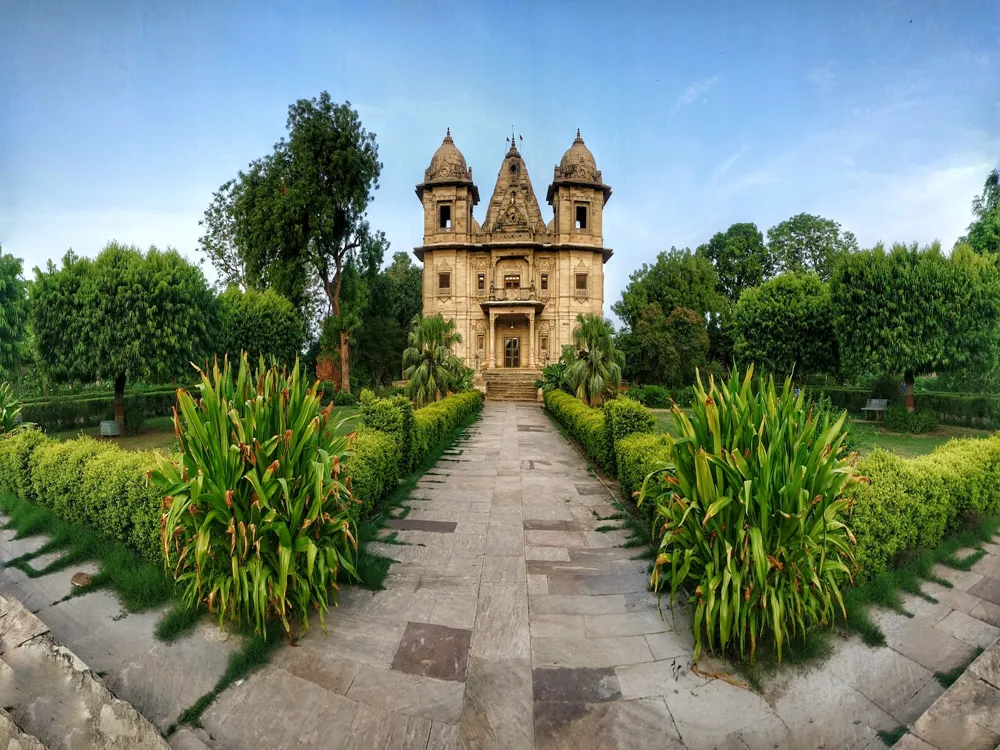
Gopachal Parvat is a famous for the 7th and 15th century rock-cut Jain monuments. The monuments are dedicated to Jain Teerthankaras - Adinatha, Mahavir, Neminatha and Rishanabhanatha - whose idols can be seen in a meditative posture. They are a part of 100 monuments located in and around the city.
Gujari Mahal (State Archaeological Museum)
Built by Man Singh in the 15th century for his favorite wife Mrignayani, Gujari Mahal is now in ruins and also an archaeological museum as it showcases various sculptures, statues and other remains dating back to 1st and 2nd century BC.
Gurudwara Data Bandi Chhod

Gurudwara Data Bandi Chhod is associated with Guru Har Gobind Saheb, his imprisonment in the Gwalior Fort and his release along with the 52 kings who were held captive. The Gurudwara has immense religious importance and is visited by the followers to pay homage to the great man.
Gwalior Fort
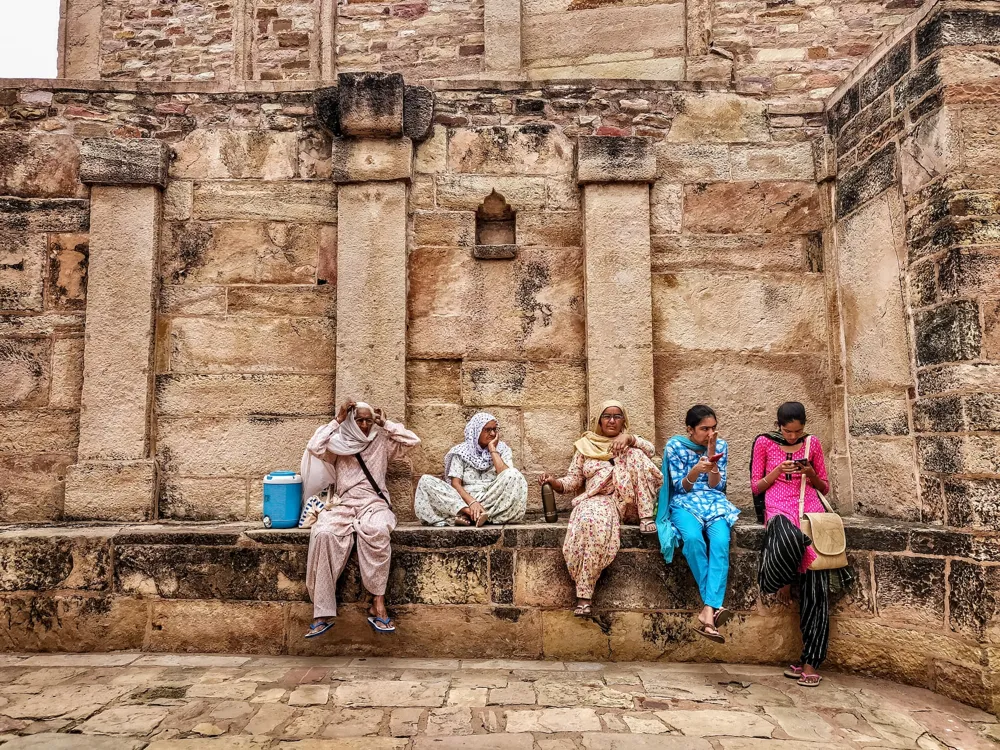
Referred to as 'the pearl amongst fortresses in India' by Mughal emperor Babur, the Gwalior Fort is one of the most impenetrable fortresses located in the entire northern and southern India and is a place you definitely must visit. Situated on the top of a vast rocky mountain near Gwalior in Madhya Pradesh in central India, this imposing structure dominates the entire city of Gwalior. An inseparable part of the identity and architecture of the city, evidence suggests that it has been around since 6th Century. It is also the places where the second oldest reference of the number 'zero' has been found in the form of a carving inside a temple on the top of the fort.
The construction of the Gwalior Fort took place in two parts, in two different time periods and thus, this architectural marvel has an intriguing history attached to it. It has passed from the possession of one dynasty to the other, multiple times. The entire fort complex is well maintained and includes temples, water tanks and palaces such as Man Mandir, the Gujari, the Jahangir, the Karan, and the Shah Jahan.
Read More
Gwalior Trade Fair
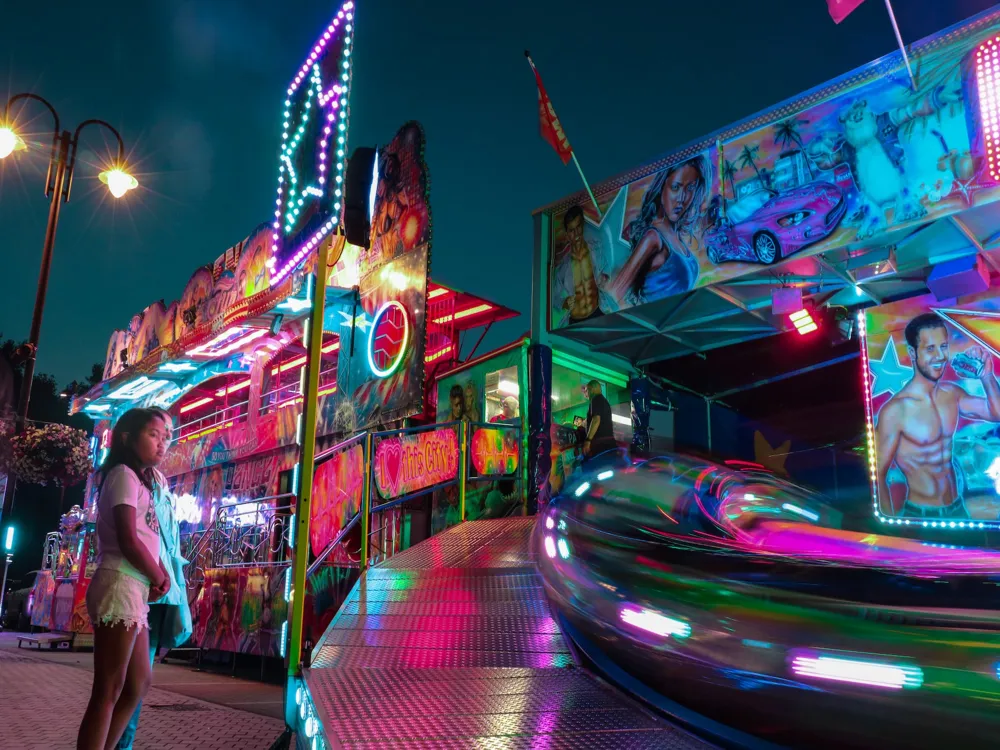
One of the largest fairs of Madhya Pradesh, this trade fair was started in 1905 by Maharaj Madhav Rao Scindia, the king of Gwalior. A unique blend of art and business the Gwalior Trade Fair has behind it a history of 110 years. Spread over an area of 104 acres, the fair is held at the Mela Ground at the Race Course Road. The items sold range from clothes, electric appliances, pottery to cattle.
Gwalior Trade Fair 2019 Dates
The Mela is usually held midway through December and lasts for a month, spilling over into the new year, giving attendees the perfect avenue to do all that holiday shopping.
Venue of Gwalior Trade Fair
Source
Hosted annually in the historically important city of Gwalior, the trade fair is held over a 100-acre wide Pragathi Maidan or the Mela ground. Located at Race Course Road, Gwalior, it lies within 5 km of Gwalior junction.
Tickets
An entirely ticket-free function, the Gwalior trade fair is free to anybody that wants to visit the fair and the stalls that are set up.
Where to stay?
Gwalior has numerous up-scale accommodation options such as the Taj Usha Kiran Palace if that kind of stay is what one is looking for. However, a proliferation of serviced apartments offer visitors the options of staying within any budget.
What to do at Gwalior Trade Fair? Competitions & Activities
Source
With over 3000 kiosks and over 1000 permanent booths, the Gwalior trade fair is nothing short of a carnival of colours and sounds. It is so much more than just a gathering where people can buy goods and commodities, and there are enough and more activities to arrest everybody’s attention. The sheer volume of the stalls and pavilions that are set up every year and the variety of the products that are offered up is incredible. Small-scale artisans that sell locally manufactured pottery and furniture set up their booths next to their counterparts from across the country selling their respective wares. Big multinational and government corporations also jostle with each other at the mela ground, all vying for the customers’ attention. This environment of even competition encourages entrepreneurs and artisans to display their goods to a wealth of visitors and is an opportunity for them to grow as enterprises. The trade fair is divided up into various sectors, such as the electronic sector, sports and toys sector, food sector, all the help the visitor find what they need easily.
Gwalior mela jhoolaSource
However, the Gwalior trade fair is not merely about the stalls that sell their wares. Magicians, carnival rides, food stalls, giant wheels, and a children’s fair all serve to ensure that anybody that goes to the trade fair will be thoroughly entertained even after they’ve done their shopping. Poets come together to recite their work to the public at the Hasya Kavi Samellan. Mushairas and qawwali competitions are conducted that fill the evening sky with the lyrical musings of Urdu poets. Cultural nights and live music performances ensure that there is no shortage of reasons for a visitor to stay long after they’ve found what they were looking for. A dog-show that’s conducted once the cattle fair has been concluded gives all dog-lovers to marvel at the prowess of their canine friends. An entire section of the trade fair is dedicated to outdoor swings, or jhoolas, that will be sure to make the little ones that make this trip squeal with delight. History of Gwalior Trade FairFirst established as a fair where people can buy and sell cattle in 1905 by the Maharaja of Gwalior, the Gwalior trade fair has exploded in the last hundred years to become one of the largest trade fairs in India, and in the world. The fair has evolved to encompass all manner of goods and commodities, but the cattle fair is still the principal attraction of the fair, with over a whopping 10,000 animals changing hands each year. Hosted across more than a 100 acres of land with massive numbers of stalls selling everything from cars to art to home appliances within its milieu, the Gwalior trade fair is one of the events in the North Indian calendar that is keenly anticipated.
How to get there
Gwalior is well-connected to all major Indian cities through all three modes of transport; air, rail, or by road. Lying just under 10 km outside of Gwalior city centre, one can easily get from Gwalior airport to the city by hiring a cab. Getting to Gwalior by rail is also easy, one just has to get down at Gwalior Junction Station, and the mela ground is only about 2 km from there.One of the most highly anticipated events of the year, the month-long extravaganza of the Gwalior trade fair is characterized by lights, music, food, and shopping of products from all over the country. The Gwalior trade fair is a great excuse to go and visit one of the most historically important cities in India.
Read More
Gwalior Travel Packages
View All Travel Packages Gwalior
Nearby Places Gwalior
Browse Package Collections
Browse Hotel Collections










